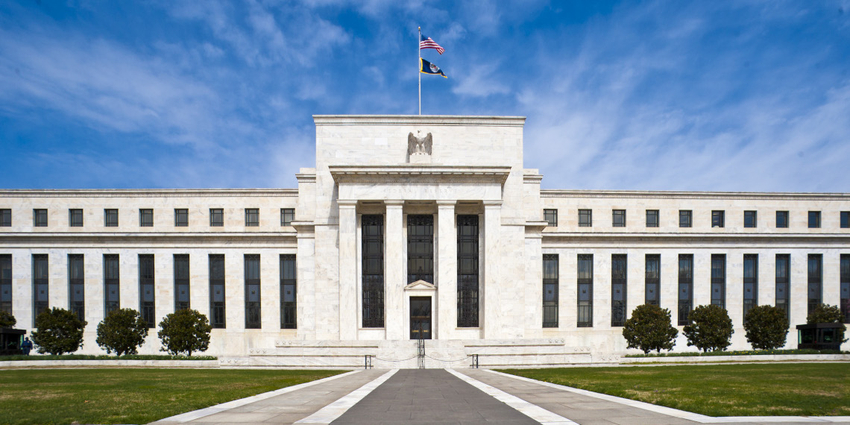To say that the US Federal Reserve is the world’s most important central bank is to state the obvious. The Fed’s monetary-policy decisions affect market interest rates worldwide, and no central bank can ignore them without risking unwelcome movements in its own currency’s exchange rate.
Moreover, the Fed’s leadership – for good or ill – extends beyond current monetary policy. To be sure, the Fed was not a global frontrunner in designing a monetary-policy strategy – remember how long it took to adopt inflation targeting officially – or in making its decisions and communications more transparent. But make no mistake: the Fed also plays a leading role in global discussions of strategic central-banking issues.
No wonder, then, that central bankers eagerly awaited the outcome of the Fed’s recent review of monetary policy strategy, tools, and communications. But the Fed’s new strategy, announced in late August 2020, should probably not serve as a global benchmark for the conduct of monetary policy.
Switch to average inflation targeting
Other central banks should think long and hard before they follow the Fed, for both technical and political reasons. The first concerns the Fed’s switch to average inflation targeting, whereby it now “seeks to achieve inflation that averages two percent over time.” It is hard to see how such a regime can credibly anchor inflation expectations when the Fed has clarified neither the past period for measuring the degree of undershooting of its two percent target, nor the procedure for deciding on the duration and distribution of higher inflation in the future.
Second, Fed Chair Jerome Powell says policymakers will refrain from setting a numerical objective for maximum employment – one of the Fed’s congressionally mandated goals – because it cannot be measured and changes over time. But if maximum employment is immeasurable, then no numerical value can be set for the shortfall of employment from this level. And the shortfall will be a key factor in future monetary-policy decisions.
In this context, the decline in the key federal funds rate is related to the fall in the natural real interest rate – a non-observable rate for which empirical results are accompanied by a high degree of uncertainty. Furthermore, it remains an open question whether expansionary monetary policy may itself have contributed to the natural real rate’s fall. In that case, the argument for lowering the central-bank rate would be circular.
Intervention in the inequality debate
Third, the Fed has now explicitly assumed responsibility for income distribution in the United States. In his speech at the recent annual Jackson Hole symposium, Powell emphasized that as America’s long pre-pandemic economic expansion – and, one might add, expansionary Fed policy – continued, “the gains began to be shared more widely across society. The Black and Hispanic unemployment rates reached record lows, and the differentials between these rates and the white unemployment rate narrowed to their lowest levels on record.”
But Powell’s intervention in the inequality debate will eventually backfire. Once the Fed begins to tighten monetary policy, it will come under immense political pressure not to hurt the poorest members of society.
Finally, the Fed’s new strategy contains no answer to the challenge of building an inflation-targeting model that integrates financial-system risks, with all their shifting dynamics, non-linearity, and complexity. No such model currently exists. While I am not obsessed with the European Central Bank’s “two-pillar” approach to analyzing risks to price stability in an encompassing way, it is at least an attempt to deal with the problem. The Fed is thus continuing its dangerous neglect of money and credit, and – strangely, but unsurprisingly – did not even include these words in its updated strategy statement.
Distributive justice as an objective of monetary policy
At the very least, other central banks should not blindly follow the Fed’s new strategy. But my biggest concern relates to the great importance that the Fed places on income distribution. To be clear, economic inequality – along with threats to the environment – is a key global political issue, and monetary-policy decisions inherently have distributional effects. But acknowledging that fact – and conducting a monetary policy that abstains from measures that directly influence distribution – is very different from making distributive justice an objective of monetary policy.
The Fed’s new strategy thus raises several questions. Can monetary policy achieve distributional goals? Might these objectives potentially clash with the price-stability mandate, and how should conflicts between a self-adopted goal and a legal mandate be resolved? Is a central bank even entitled to claim responsibility for distributional policy in a democracy?
Central bankers are not omnipotent, and they should not communicate and act as if they were. Distributional decisions must remain in the hands of governments and legislatures that are directly answerable to voters. By playing an increasingly political role, monetary policymakers will further undermine and ultimately destroy the case for central-bank independence. It remains to be seen what central banks can and will achieve when they are exposed to politics in all its aspects.
By assuming responsibility for tackling economic inequality, the Fed has put other central banks under huge political and moral pressure to follow suit. They would be wise to resist.
Otmar Issing, former Chief Economist and Member of the Executive Board of the ECB, is President of the Center for Financial Studies in Frankfurt.
This article was first published on the opinion page Project Syndicate.
Blog entries represent the personal views of the authors and not necessarily those of SAFE or its staff.

